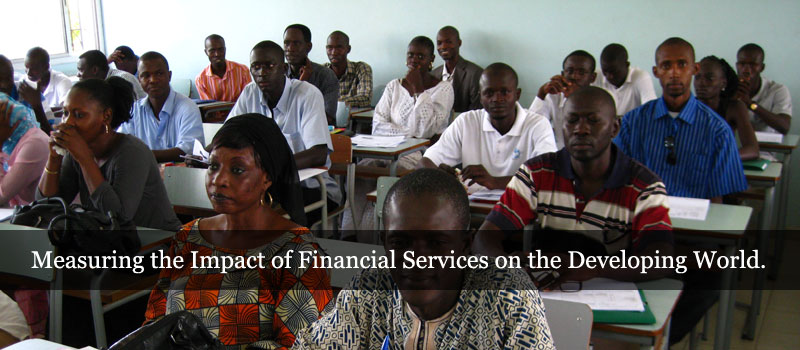Going to School with M-PESA
Sherri Haas and Geetha Nagarajan, IRIS Center. November 2011
More than one-third of the adult Kenyan population is now registered to use M-PESA. Its reliability as a fast and cost-effective means of transferring money has made it the go-to product for payment and remittance services. M-PESA is now being considered as a potential platform for expanding access to other services. Here, we use information collected using qualitative tools to discuss the current and potential role of M-PESA in facilitating access to education in Kenya.
For many Kenyan parents and guardians, acquiring lump sum funds for payment of school fees can be a significant financial strain. If M-PESA allows families greater access to funding and improves the ability to pay on time, it could have a positive effect on consistent student enrollment. The significant role M-PESA has in payment of school fees can be seen in looking at changes in M-PESA use over time. M-PESA shop agents interviewed by IRIS noted an increase in M-PESA use during the time when school fees are due and focus group participants also frequently cited M-PESA as a means for helping them to pay school fees. Our research suggests that M-PESA could provide greater access to funding and the ability to pay on time which could result in a positive effect on consistent student enrollment and retention.
There are multiple channels through which the M-PESA platform may improve access to education. One of the oft-cited ways is by serving as a means of obtaining funds from family and friends to pay for school fees and supplies on time. Family members are able to transfer money quickly and in some cases are able to acquire funds from sources they otherwise would not have access to.
In addition to acquiring the funds needed, M-PESA can also serve as a cost-saver through its use to effect quick, reliable and transparent payment of fees to the school. This is particularly true in the case of children attending school away from the parent's residence. As reported during key informant interviews, time and expenses are saved by not having to either send the student home to retrieve school fees or send someone to make the payment, improving school attendance and retention. Safety is also increased by not sending cash through a third-party delivery.
Although the link between M-PESA and education payments was commonly cited, interviews with school principals indicated that the relationship between schools and M-PESA use was not direct. While many parents and guardians may use M-PESA to transfer funds for paying school fees, in most cases they must still withdraw the money in cash and then pay the school or deposit the money into the school's bank account. In some instances, a principal or bursar who knew the parents well might allow them to send a child's school fees to his or her personal phone. But many principals said they actively discouraged this practice because of a lack of accountability and tracking ability.
Safaricom has initiated a program in partnership with Co-operative Bank, Kenya Commercial Bank, and CFC Stanbic called Lipa Karo na M-PESA. The service works through the Pay Bill function, allowing the sender (parent, guardian, or other contributor) to transmit funds on the student's behalf directly to the school's account. This simple system cuts out the need described above for parents or other intermediaries to cash out the funds transferred before they are deposited in the school account, increasing the safety of the funds and reducing the time spent on the transaction.
It was interesting to find that M-PESA's potential effect on access to education is not solely connected to accessing and transmitting funds. In Katitika, an M-PESA-facilitated water borehole has been serving the community with clean water since 2009. The primary school near the borehole was able to purchase water to fill the school tank during the dry season. Previously, the school had relied on untreated water collected and delivered by the parents from the river 7 kilometers away. The head teacher of the school noted that students had more health problems and absences prior to the instillation of the borehole. By increasing access to safe water, it is possible that M-PESA could have indirectly contributed to improved school attendance through reduced sick days.
Although most studies of M-PESA to date show that it is mainly used to transfer funds, there is potential for its use to accumulate lump sums. In the health services sector, we have begun to see M-PESA used in combination with a healthcare savings card for accumulating lump sums through small contributions over time. A similar program for education savings could allow families to designate contributions through M-PESA to an account specifically for school expenses - without having to travel to or be a member of a formal financial institution. This type of program may increase their ability to save sufficient funds for planned education expenses in the same manner as the health savings card. In fact, some formal financial institutions are already integrating M-PESA into their existing education savings accounts to facilitate the easier accumulation of funds.




